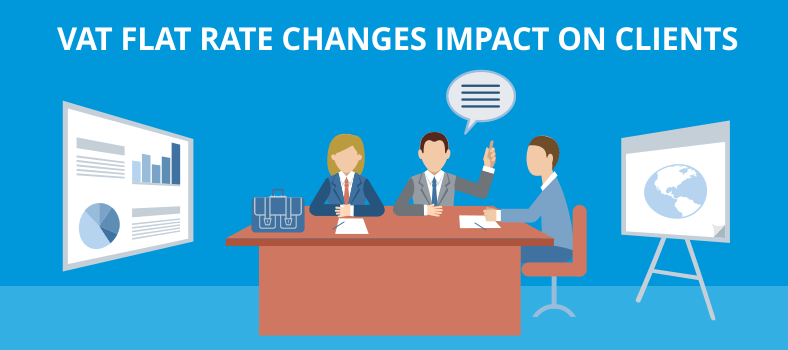From 1st April 2017, the benefits of Flat Rate savings will virtually disappear for the majority of Contractors. HMRC has proposed a new flat rate percentage of 16.5% for any business of any industry if they are classified as Limited Cost Trader. 16.5% equates to 19.8% of sale and therefore the saving is the very small amount of just 0.2%. So naturally anyone spending more than 0.2% on Vatable expenses will be worse off continuing on the Flat Rate Scheme from 1st April 2017.
I will come to what are vatable purchases and an example later but let's look at who is considered a Limited Cost Trader and if you fall under the definition. This is the first starting point.

Who is Limited Cost Trader?
A business is a Limited Cost Trader if its VAT inclusive expenditure on relevant goods is either:
- less than 2% of your VAT flat rate turnover
- greater than 2% of your VAT flat rate turnover but less than £1000 per year. Remember £1000 is the yearly limit so for Quarterly period this will be £250.
One thing to be really careful of is that you have to check each VAT return to see if you are categorised as a Limited Cost Trader or not; you could be a Limited Cost Trader for one VAT period, and then back to your usual flat rate category for another.
However, we cannot change the scheme each quarter so once we change scheme we must stick to Standard Rate for a period of at least a year so the switch from Flat Rate to Standard Rate must be a careful one.
I must highlight that 2% spend is on relevant goods only. This does not include any spend on services or goods used in business like computers, printers etc. Any spend on services like lawyers, accountants or others will also not be included.
Relevant Goods mean goods purchased for the purpose of selling or direct usage in delivering service. On this basis I doubt most of our Flat Rate clients will be Limited Cost Traders and therefore the new rate of 16.5% will apply to them.
Please see below the example to better understand why you go for the standard VAT Rate: -
Example 1 - Compare old flat rate of 14.5% with limited cost trader percentage of 16.5%
A business provides Civil Engineering services with a business turnover of £60,000 per annum.
Accommodation costs are £4,000 + VAT per annum and are not reimbursed by the business' clients. Accountancy fees are £1,500 + VAT per annum.
VAT inclusive turnover £60,000 + VAT £12,000 = £72,000.
Currently, under the flat rate scheme, with a rate of 14.5%, the VAT payable would be:
- 14.5% x VAT inclusive turnover £72,000 = £10,440
- The saving under the flat rate scheme is £12,000 - £10,440 = £1,560
Under the new Limited Cost Trader rate from 1stApril 2017, with a rate of 16.5%, VAT payable would be:
- 16.5% x VAT inclusive turnover £72,000 = £11,880
- The saving under the flat rate scheme is £120
You can see that savings are negligible and by switching to the standard rate, businesses can claim input VAT on accounting services and accommodation which they were not claiming earlier.
Example 2- The Standard Rate option
In the above example, the company also incurred VAT inclusive purchases (£4,000 + £1,500) + VAT £1,100 = £6,600.
The expenses related to accommodation costs and accountancy fees are £4,000 and £1,500, excluding VAT, respectively.
Under standard rate VAT the amount of VAT payable would be £12,000 - £1,100 = £10,900.
If we compare, the flat rate saving on the 14.5% flat rate and the standard rate vat claimed on expenses, then the flat rate VAT saving is more beneficial by £460.
However, with the changes planned in April 2017, claiming VAT under the standard rate VAT scheme becomes more attractive rather than the new rate of 16.5% by £980.
Assuming there are no changes to the planned legislation following the consultation period, where you currently benefit from the flat rate VAT scheme, going forward, a move to the standard rate VAT scheme would be beneficial.
However, evidence of VAT expenditure is a crucial requirement to benefit from the standard rate scheme.
Any questions? Schedule a call with one of our experts.

.png)






